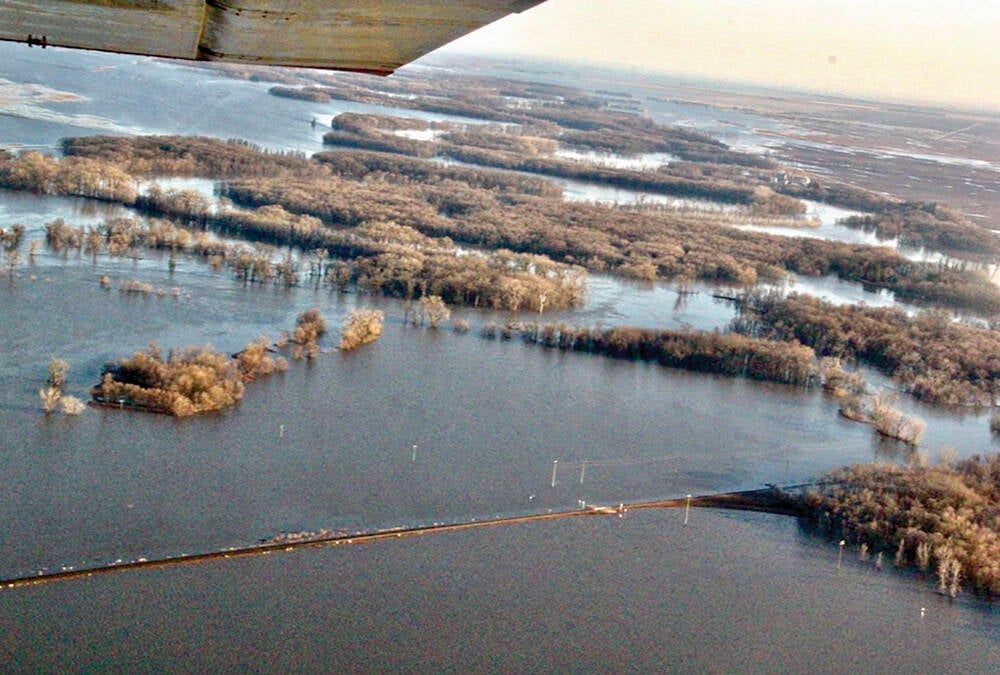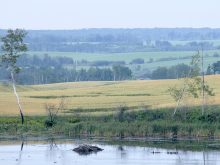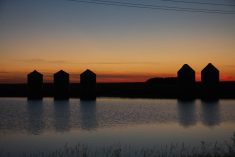BALGONIE, Sask. – You wouldn’t think that canola plants would interest a filmmaker, but they caught the attention of Bob Long, likely Saskatchewan’s longest working director and cinematographer, now into his 50th year of filming.
Long has a master’s degree in biology so he’s fascinated by the science of living matter and all forms of animal and plant life, including canola. Since 1967, Long has made 80 documentaries, many of them about nature or the environment and geared to educate.
One called the Canola Jungle was designed for farmers. It explained the ecology of a canola field and the insects and diseases that attack it.
Read Also

Rural Manitoba resources slim on natural disaster planning
A study from Brandon University’s Rural Development Institute has found that many rural and small municipalities don’t have the staff or resources to make formal climate plans against natural disaster.
“It was broadcast on SCN (the publicly funded Saskatchewan Communications Network),” said Long.
To make a portion of this film, he brought canola plants into his studio and placed them under an optical bench that he built in 1987.
“It’s designed to do extreme microscopic photography or cinematography work, down to the range of bacteria,” Long said. “Small subject filming and photography is a specialty here. As far as I know, I have the only such setup in Canada.”
Under the bench, he watched clusters of bertha armyworm eggs hatching on the canola plants.
“One of these eggs opened and out popped a little tiny wasp, which was quite unexpected,” Long said.
“It turned out to be a known species that was attacking bertha armyworms that had never been seen before.”
When Agriculture Canada learned about the discovery, the department began cultivating the wasps in its lab.
In 1988, the British Columbia Cattleman’s Association hired Long to make a film about controlling the spread of knapweed. The weed is a serious threat because animals will not eat the noxious tasting plant.
“It just takes over,” Long said. “It will have no trouble whatsoever displacing the native grass growing in natural pastureland.”
Between 1982 and 1990, Ducks Unlimited Canada hired Long as its main filmmaker. He produced one film per year for the group.
“We were able to change their image with their outreach programs,” said Long. “In the ’90s, we had films in school libraries across Canada.”
In the early 1970s, Long worked with a Canadian Wildlife Services biologist from Saskatoon to make a film about the migration of whooping cranes. With some effort, they located five cranes near Govan, Sask.
“To find a group of that size would have been an exception because, back then, that was one-quarter of the world population,” said Long. “Over 100 now migrate through Saskatchewan.”
The British Broadcasting Corporation has broadcast two of Long’s documentaries: one about the short grass prairie and one on the aspen parkland.
“They commissioned me to make them here, in Saskatchewan, for them,” Long said. “They were done in partnership with the Public Broadcasting System program, Nature.”
The National Film Board of Canada and the Discovery Channel commissioned Long to make a documentary that turned out to be the highlight of the filmmaker’s career; Seasons of the Eider about eider ducks. Long finished the work in 1999.
“The film was literally the only project in my life where the budget was not the chief constraint. It only happened once.”
The Discovery Channel and SCN broadcast the majority of Long’s films, but others, like CBC and The Knowledge Network in B.C., have also aired his work. His documentaries range in length from 15 minutes to one hour.
At the start of his career, Long edited films by cutting them and taping them together. Now, he does all his editing on a computer. The irony, he said, is that it takes much longer.
The filmmaker’s computer contains specialized editing programs that cost $1,600 to $60,000 each. Long estimates that the kit of equipment he used to travel with cost as much as a house. Newer equipment costs much less.
Long had no formal education in cinematography. His career began when he was an undergraduate at Carleton University in Ottawa. In the summer of 1967, Long and his brother drove to Maine and made an eight millimetre film about the crabs, starfish and other animals that they found along the beach. Long showed the film to a professor at Carleton and she contacted the chief zoologist at the National Museum in Ottawa.
“He was interested enough that he came up with a contract to do a similar film on the same marine invertebrates on the West Coast,” said Long.
In 1970, Long finished his master’s degree in biology and accepted a position at the Royal Saskatchewan Museum in Regina.
“A six month position stretched into 41/2 years,” Long said. “My main job was establishing a nature interpretive program in the provincial parks.”
In 1974, Long had to decide between accepting a position as a parks naturalist in Ontario or pursuing his filmmaking career.
“In the end, I decided to stick with what I had here,” said Long.
He started Waterhen Film Productions in 1974 and soon learned the importance of pitching his ideas to broadcasters. After a broadcaster invests seed money into a project, filmmakers can then access private or provincial and federal funding.
“It’s an incredibly complex business of putting money together to do a program now and it’s not cheap to make natural science films because it takes nine months to two years to make a film.”
Long said a small broadcaster might set the budget for a one hour film at $85,000, whereas a large broadcaster will budget $360,000 for the same one hour film.
Long learned to economize by doing the narration himself or by filling the roles of the producer, director and cinematographer. His career was almost ended when the Discovery Channel selected a new target audience and changed its programming away from natural science.
“If it weren’t for SCN, I wouldn’t have a career any more,” Long said. “SCN does audience surveys and natural science is No. 1 on the list. I maintain that there’s an audience out there that’s been abandoned.”
He has won several dozen awards. In 2006, the Saskatchewan Motion Picture Industry Association presented him with an industry achievement award for his body of work.
“I think, in terms of a life lived, it’s been quite wonderful. I am grateful that I can still make a contribution,” Long said.














